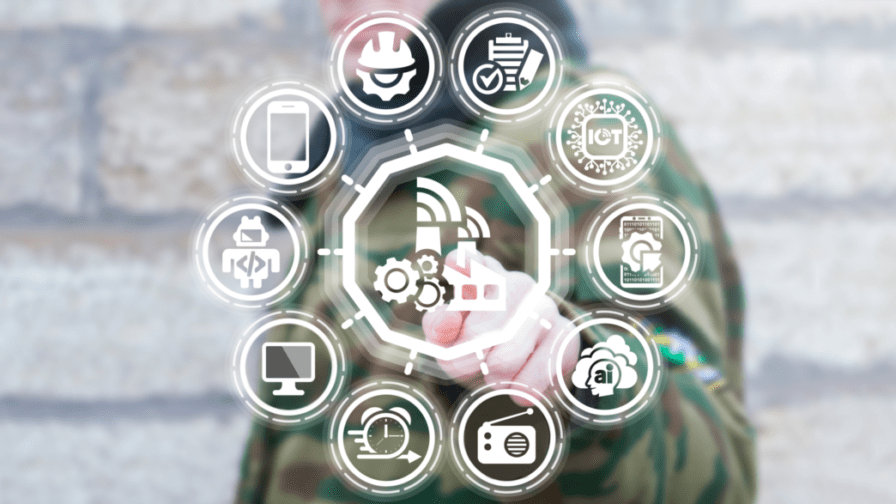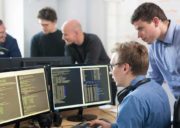
Every developer knows how hard it is to keep up with new technologies. Tools and practices are moving at breakneck speed, it’s impossible to stay afloat by reading newsletters, tutorials and forums staring at a screen after a tiring day at work. Human connection is a solution, that’s why it is vital to be present at community meetups.
By joining tech meetups and actively participating in a community, developers can talk about what they’re using and why, and what problems are indeed solved (and created) by ever-changing technologies. It happens in real life, in an informal and safe setting with cool people and sometimes a beer. Or two beers. No amount of time spent reading online docs or StackOverflow can give you the same value of the honest opinion from a colleague you trust.
I deeply believe in the power of tech communities, I am so involved in #aperitech meetups coordinated by Codemotion that I even founded one: Vox Machina, a meetup on voice assistants. I met not only new coworkers and clients at meetups, but also friends and, in general, people I now care about. Standing in the shoes of a meetup addict, I want to show you what is a Technology Radar and why the initiative is a good idea.
Technology Radar: monitoring trends in real tech life
Technology Radar is a tool created by ThoughtWorks with the intent of recording, analysing and visualising tech trends in an organisation, event or any pool of developers in a specific timeframe. It’s a monitor of trends in technology, as they happen in real life.
The process to build up a Technology Radar, which can be considered an ecosystem more than a simple tool, is to first focus on an event. At the event, participants will be invited to vote via a webapp the technologies they prefer, specifying at what level they are investing in them:
- Adopt if they are actually using it
- Trial if they are concretely trying it out
- Assess if they are exploring it
- Hold if they are not that interested
Preferences are then aggregated in data points called blips, namely a count of how many votes a specific tech has obtained in one of the levels of involvement listed above. Blips are then shown in a beautiful visualisation resembling a radar, in which you can easily see which technologies are trending and how much developers trust in them. The radar is divided into four quadrants aligned with the typical categories in which programmers distinguish technologies: Techniques, Tools, Platforms and Languages/Frameworks.
As a result, it’s straightforward to gain insights on what is actually used by developers in real working environments, what is emerging as the next big thing and what is not growing at all. It’s all there in one plot, which can be explored in more detail, quadrant by quadrant. Most of all, the ensemble looks like a picture from the future.
BYOR
Both participants at Codemotion Milan 2018, Codemotion Rome 2019 and several #aperitech communities joined efforts in the realisation of an Italian Technology Radar, following the BYOR philosophy (Bring Your Own Radar). The results are quite interesting and can be seen here. It should be easy to see the coexistence of cutting edge and legacy tools, the shift in paradigms (i.e. big data, containers, machine learning, single page webapps), the rise of scripting languages (Javascript, Python). There are also some surprises, like “never heard about that, why is everyone using it?”
At Codemotion Rome 2019, I had the chance to see the Technology Radar presented directly by ThoughtWorks Italy and the Codemotion community managers. A few local community leaders were involved and given some space to present themselves, giving prospective from people passionate about machine learning, Javascript, Elastic Search, voice assistants. What strikes me the most in these occasions is how much trends seem to be so fragmented and difficult to actually put in use, until one day… puff! – it’s become a daily routine with the whole set of best practices. And another wave of new technology is on the horizon, ready to make everything better and better.
When data tells a story
The radar is a bright manifestation of the new data-driven world. The powerful insights we can extract from this visualisation come from a dataset which in turn is recorded in real life, at community events. The map you see on the screen is an high level overview of what is happening in the working life of hundreds of real people. The radar tells you a story, it shows you what is changing and how, what is winning and what is here to stay, what is going to be lost. There’s a smooth progression from data to viz, which is peculiar to the XXI century.
I suggest using the same dataset to identify stacks adoption. For example, preferences in containers should go hand-in-hand with microservices, as REST APIs should go hand-in-hand with React or Angular. We are moving to an even more creative and immensely variegated landscape for computer science and please note that the main protagonist, so huge and well-established we can all stand on its shoulders, is open source software.




